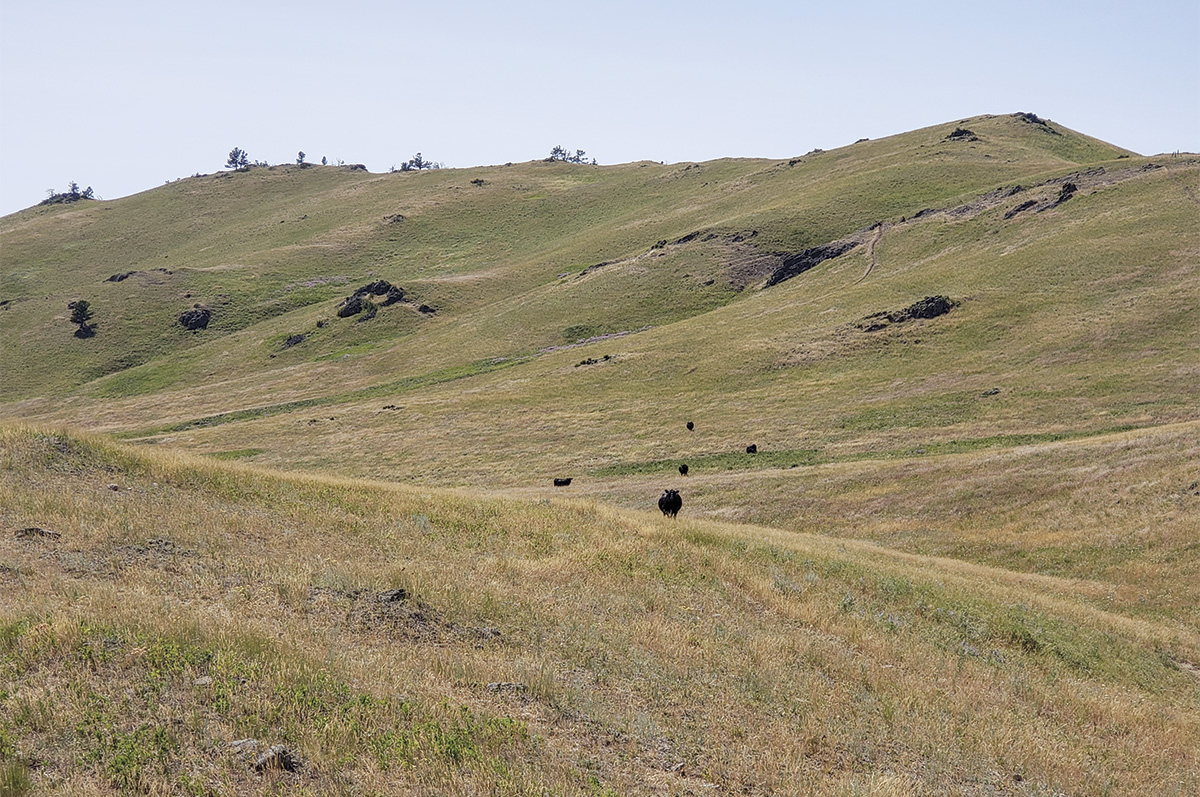As temperatures start to rise and grass begins to green up and grow, considering the availability of forage in each pasture can help livestock producers make management decisions at turnout. One of the biggest challenges producers face with early turnout is the potential lack of forage in a pasture. Initial grass growth can be slow if moisture has been reduced during the winter and early spring. Although the grass is green and high quality, quantity can be reduced and there may not be sufficient forage available for consumption, meaning cattle may not be meeting their post-calving nutrient requirements.
Another concern is low magnesium concentrations in rapidly growing grasses. During the spring, when moisture tends to be relatively abundant, grasses are not able to take up sufficient concentrations of magnesium from the soil. These low magnesium concentrations in the forage can lead to grass tetany in cattle, especially those that have just calved and are at peak lactation. When cows are most susceptible to magnesium deficiency (grass tetany), additional magnesium needs to be provided, usually in a high-magnesium mineral supplement. Prevention of grass tetany is key, and a high-magnesium mineral supplement should be provided at least 30 days before turnout onto lush, rapidly growing green grass.
For much of the U.S. along the Canadian and Mexican borders, drought is already occurring or is expected to develop this spring and summer. Therefore, adjustments may need to be made to ensure optimal stocking density for the pastures. In much of the northern Great Plains, April, May and June are the main three months for precipitation for pasture growth and for determining forage production for the summer grazing season. If precipitation is below average, forage production may be below average, and vice versa.
Balancing forage supply and livestock demand is key during summer grazing to ensure each cow meets her nutritional needs. The general rule of thumb for stocking rate is a 1,000-pound cow with calf at side is 1.0 animal unit (AU). Calculating how many animal unit months (AUM) each pasture can sustain is crucial to matching supply and demand. It is also important to make adjustments to the rule of thumb with cows that are heavier; for example, a 1,400-pound cow with a calf at side would be a 1.4 AU. Knowing the average production for each pasture can help with management decisions and determining how often pastures should be rotated.
Pastures should be monitored during grazing to determine whether the pasture is being utilized uniformly. Cattle prefer more lush and productive areas of the pasture, which tend to be located in the low-lying areas. These areas also tend to regrow more rapidly than the hilltops, which lends to cattle continuously grazing these areas and potentially reducing production. Areas surrounding water and mineral supplement sources tend to be overly grazed or trampled. If possible, moving mineral supplements to underutilized areas of the pasture can help draw cattle to those locations for more even distribution and utilization.

Pastures should be monitored during the grazing season to determine if the entire parcel is being grazed uniformly. Photo by Megan Van Emon.
Rotational grazing is an effective method for utilizing pastures more uniformly and potentially allows for pastures to be rested and allow for regrowth. Altering the grazing rotation each year, if possible, can also allow for different pastures to be utilized or rested during different times and precipitation events. Changing the grazing rotation each year can also allow more effective use of warm- and cool-season grasses. When determining when to move to the next pasture, a general rule of thumb that many producers follow is the “take half, leave half” strategy.
During times of drought, allowing more time for recovery from drought or between grazing bouts can aid in forage growth. Additionally, reducing the number of animals grazing and lowering grazing intensity can also aid in faster recovery when precipitation does occur. Care should be taken during drought when utilizing the “take half, leave half” strategy. During times of drought, there is less forage production, and “taking half” may be considered overgrazing on an average forage production year. Therefore, additional management strategies may need to be established, such as reducing the number of animals grazing, providing additional feed, or purchasing or leasing more pasture.
In years with adequate or greater-than-average spring moisture, forage quantity may not be a large concern. However, forage quality may be a primary concern. This is being witnessed in 2024 in many areas of Montana, where spring precipitation was abundant, but due to the previous years of drought, the grass quality may not have been adequate to meet the nutrient demands of lactating cows. Therefore, monitoring and accurate recordkeeping can aid in making management decisions when faced with an abundance of forage that lacks quality.
As we progress throughout the summer, maintaining accurate records of precipitation, grazing and forage production can aid in making management decisions from year to year. Having an established guideline for making management decisions when precipitation is abundant or during drought can also aid in managing the cow herd. It is becoming increasingly important to manage the nutritional needs of a herd with the forages available in each area and adjusting pasture rotation and cattle numbers as needed. Always keep in mind that the grazing decisions made during the summer months will impact forage production and quality in the following months and years.








